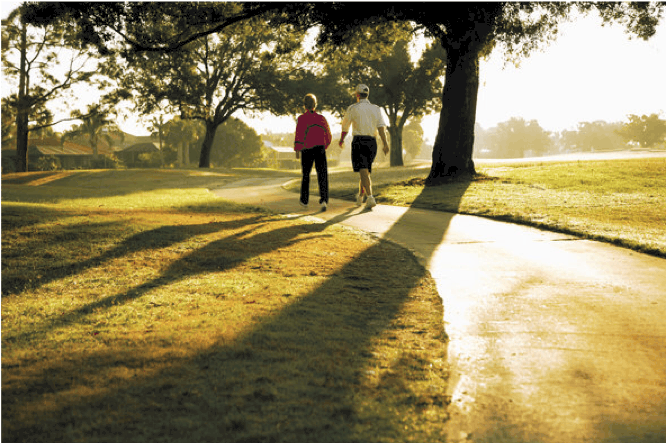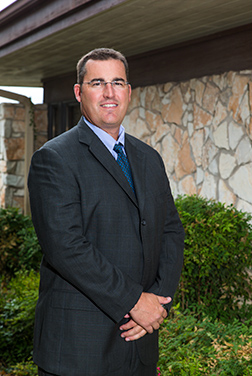If you or a loved one is experiencing any of the following symptoms or conditions, call the office of Dr. Clint Morris at (830) 895-4466 for further evaluation.
Just the thought of physical activity might cause pain and stiffness in your joints, when living with osteoarthritis (OA). However, research suggests that those with OA-related knee pain can benefit from regular walks combined with stretching.
In fact, strong evidence shows that moderate exercise, including walking and stretching, provides considerable disease-specific benefits for those with OA without worsening symptoms or disease progression. Adults with OA can expect significant improvements in pain, physical function, quality of life, and mental health by engaging in low-impact physical activity for approximately 150 minutes per week.
- OA is caused by the breakdown of cartilage in the joints. While it may seem counterintuitive that more physical activity and stress on those joints would be helpful, exercise can promote healthy joints in several different ways:
• Keeps cartilage happy: Walking and other types of moderate, low-impact exercises increases blood flow to the cartilage, and delivers nutrients that keep it healthy. A recent study found that people who did light exercise, such as walking, more than three days a week for less than two hours per day had much healthier knee cartilage than those who didn’t exercise at all. - Strengthens muscles around the knee: The more you use a muscle, the stronger it gets. Walking builds strong calf, hamstring, and quadricep muscles that can support more weight. When these muscles work harder, your joints don’t have to. This can lessen wear and tear on the cartilage.
- Helps with weight loss: The knee is a weight-bearing joint, and more weight means more stress on the cartilage. Increased physical activity paired with a healthy diet can help shed a few unwanted pounds and improve joint health.
- Increases flexibility: One of the most debilitating symptoms of OA is stiffness in the joints. Stretching actually lubricates the joints and increases their range of motion. It’s best to stretch after a walk when the muscles are warm.

Don’t Overdo It
Exercise is important for those with OA of the knee, but too much physical activity can do more harm than good. When starting an exercise routine, the CDC recommends you make S.M.A.R.T choices.
- Start low, and go slow: If you’re not used to exercising, it’s better to ease into your new routine. This could mean just 5 minutes every other day for some people. Make sure your body has had time to adjust before increasing the duration of your walks. Fortunately, even a small amount of activity can be valuable.
- Modify activity as needed: As you get into your routine, some OA symptoms may come and go from day to day. Instead of stopping altogether, try to modify your activity levels in a way that allows you to keep moving. Being active is the most important thing.
- Activities should be joint friendly: It’s important to choose activities that exert the least amount of stress on the joints. Walking is a perfect low-impact exercise for people with OA of the knee. Try other low-impact activities, like bicycling, elliptical training, swimming, or water aerobics, to mix things up and avoid getting bored.
- Recognize safe places and ways to be active: The purpose of an exercise routine is to keep you healthy, so safety should be of the utmost importance. When going for walks or bike rides, make sure the paths or sidewalks are well-lit and free of obstructions. If the weather outside is undesirable, too hot, too cold or raining… Consider a mall or gym with an indoor track.
- Talk to a healthcare professional: Before you begin exercising, talk to your doctor or a certified exercise professional for recommendations on duration, frequency, and activity level.
Although living with OA of the knee can be painful, incorporating exercise into your daily routine can help you, and your joints, feel better.
Dr. Clint Morris understands the frustration of living with knee pain and the fear that accompanies it. Often, most put off calling to schedule an appointment with an Orthopedic surgeon because they think the only other option is surgery, since they have already gone through traditional treatments with their primary physician… Physical therapy, injections and/or prescription drugs. Dr. Morris encourages his patients to communicate their needs as detailed as they can, trusting that together, you and Dr. Morris will work as a team to come up with the best treatment option for your condition. As one of the top board certified Orthopaedic and Sports Medicine surgeons in the Texas Hill Country, you can rest assure that Dr. Morris is fully committed to addressing your knee pain and getting you back to doing the things you love.
To schedule an appointment with Dr. Clint Morris or for more information about his services, please contact us here or at our Kerrville location (830) 895-4466.

 Dr. Morris has more than 23 years experience in the Texas Hill Country in the care of Sports Medicine and orthopedic surgery.
Dr. Morris has more than 23 years experience in the Texas Hill Country in the care of Sports Medicine and orthopedic surgery. 